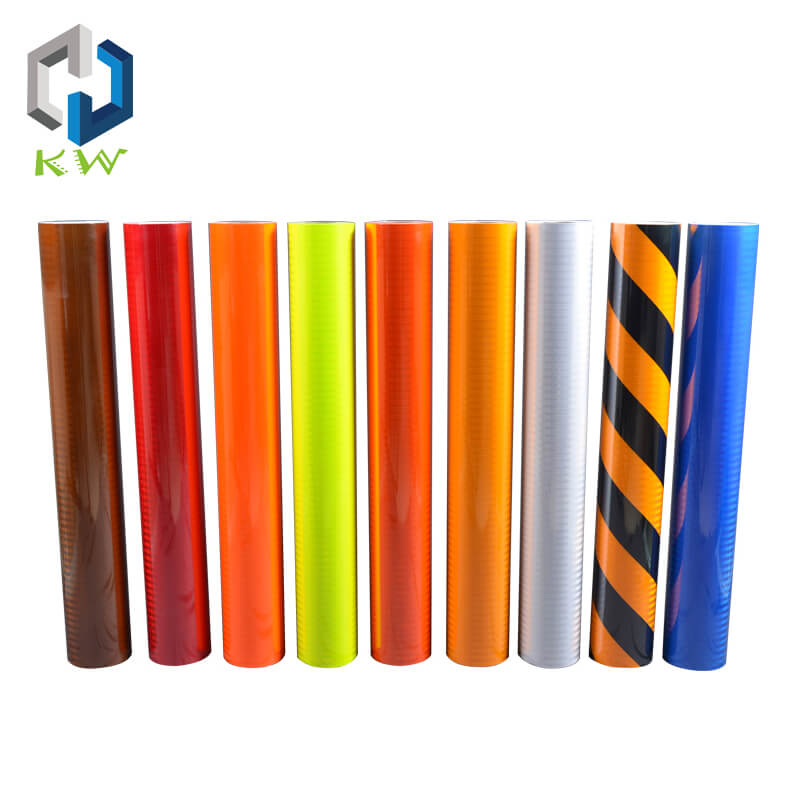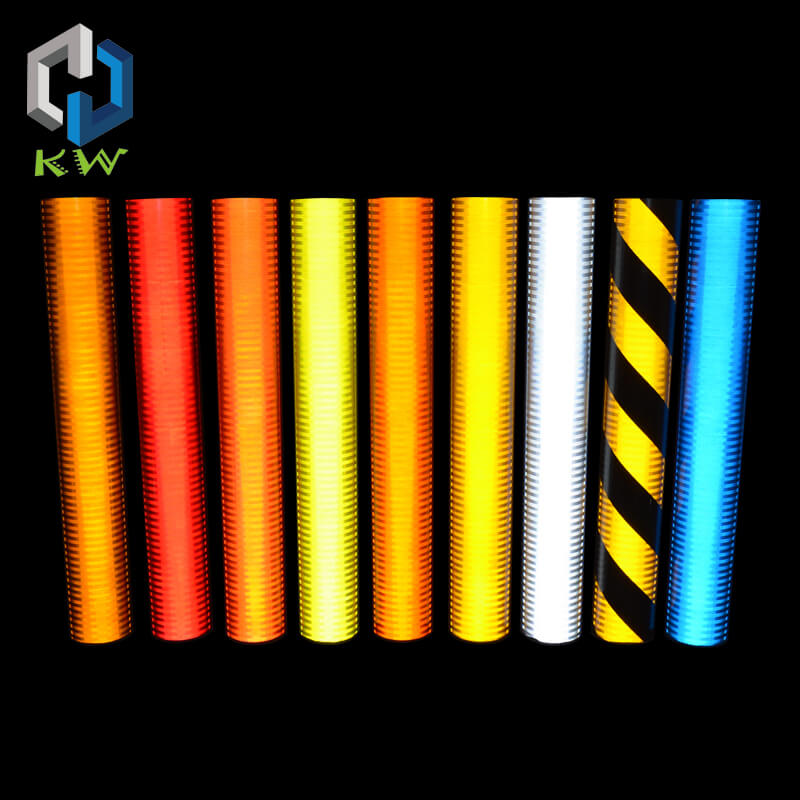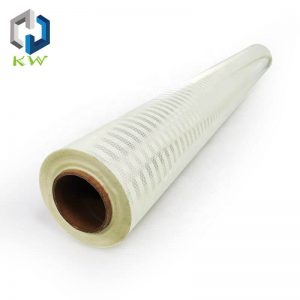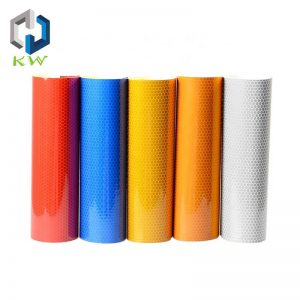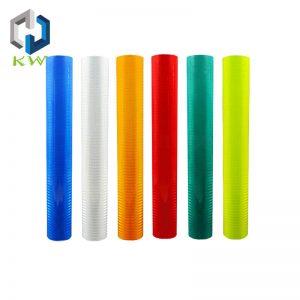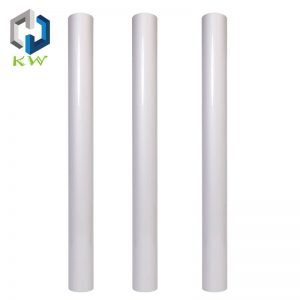Reflective Sheeting For Traffic Signs Wholesale Manufacturer
Quick Details of Reflective Sheeting For Traffic Signs
Product item: KW-XS9000
Material: PC/ PMMA
Adhesive Type: Pressure Sensitive Adhesive
Size: 1.22m*45.7m /Roll; (Customizable)
Color: White, fluorescent yellow, red, blue, many other colors available
Reflection Principle: Micro Prismatic
Feature: High Visibility, durable, adhesive, Eco-friendly; Can be silk screen printed, easy for computer cutting
Application: Reflective road signs materials, traffic signs, reflective signs, work zone signage, other road safety facilities
Reflective Sheeting For Traffic Signs Product Description
Reflective Sheeting For Traffic Signs carries several popular grades of retroreflective sheeting to meet a variety of needs and requirements. These materials can be used to manufacture traffic and custom signs and sign faces or sheeted blanks.
They can also be purchased in the form of roll goods, border tapes, radius corners, and die cut letters numbers, and arrows. While all of the materials we carry are reflective and meet different ASTM D4956 standards, each has its own unique properties.
Sign faces on traffic signs are made of retroreflective sheeting. These are ideal due to a long lifetime regarding color fade and due to their very good retroreflectivity. Incoming light is returned, mostly independent of the angle of the light. Retroreflectivity is achieved by embedding micro glass beads with a diameter of 0.01 to 0.1 mm or micro prisms.
Traffic signs must be retroreflective or otherwise illuminated to show the same shape and similar colors by both day and night. Per the 2009 MUTCD, agencies are required to establish and implement a sign assessment or management method to maintain minimum levels of retroreflectivity. Agencies can choose to use one method or a combination of the two.
The earlier a motorist is able to see a road sign, the longer they have to absorb the information given. We have a range of retroreflective sheeting suitable for permanent road traffic signs where long-term durability is required.
At first glance, it may not seem like much has changed over the last few decades in the world of traffic signs. Stop signs are still octagons, one-way signs are still standard black-and-white arrows with text, and yield signs are still inverted triangles. But that doesn’t tell the whole story. Colors have changed and materials have changed. What initially seems like an unchanging façade of standardized road signs belies the technological progress that has been made.
Retroreflection is the same as mirror reflection with one major difference; light beams that strike a retroreflective surface bounce back in the same direction as they came. For the most part, retroflection is achieved in two different ways. Three mirrors arranged perpendicularly into a ‘cubes corner’ will return light directly to its source, as will a transparent sphere backed by a spherical mirror.
What is Reflective Sheeting?
Reflective sheeting is the sheeting used to create reflective road signs, traffic signs, street signs, and highway signs.
Basically, reflective sheeting for traffic signs is laminated to aluminum sign blanks of various sizes and shapes, then printed with whatever copy is needed, and you have a reflective traffic sign.
Different Reflective Sheet Grading
Reflective sheeting comes in various grades, the most common being “Engineer Grade”, “High Intensity Grade”, “Engineer Grade Prismatic”, “High Intensity Prismatic”, and “Diamond Grade”. The USDOT requires diamond grade for most interstate signs, and most state DOT’s require it for school zones and stop signs and any sign mandated to use it that they believe needs it. Those requirements vary from state to state.
Engineer Grade reflective sheeting is made of glass beads and PVC film, now used mostly for private company signs or decals, and has less intense reflectivity than does the EGP, HIP, or DG reflective sheeting, which meets ASTM D4956 Type I. If you were to contact us to order reflective decals from our firm, we’d be printing them on “EG” reflective films.
High Intensity Grade Reflective Vinyl has higher reflective properties than engineer-grade and is generally made of glass beads laminated with PET film. The hardness is higher than the engineering grade reflective film, not suitable for printing.
EGP Reflective Sheeting has better reflective properties than high-intensity grade and is laminated by micro-prismatic PET film. The hardness is higher than that of engineer grade reflective films and is not suitable for printing and curved surface applications.
High Intensity Prismatic Reflective Vinyl has better reflective properties than EGP Sheeting and is laminated with micro-prismatic PC/PMMA film. High stiffness, not suitable for printing and curved surfaces, meets ASTM D4956 Type IV, commonly used for road signs.
Feature Of Reflective Signs Sheeting
KWVINYL Reflective Sheeting For Traffic Signs was specially developed for the manufacture of traffic control and guidance signs, warning signs, and information signs as well as for reflective lettering, numbers, and symbols, which are intended for long-term outdoor use.
And it has an adhesive with excellent adhesion on metallic surfaces as aluminum and zinc-coated steel plate. Fully CE Accredited Glass Bead, Micro-Prismatic and Translucent Products for use on Permanent Traffic Signs, Bollards, and Delineators. Temporary Traffic signs, Road Cone and Delineators as well as Translucent Traffic signage.
- 1. Easy to apply on any clean, smooth surface.
- 2. Easily removable, and will NOT damage your paint during or after installation.
- 3. Using high-quality adhesive glass beads reflective film reflective.
- 4. High stretchable ability, and ultimate flexibility to most curved surfaces.
- 5. Resistant to water, solvents, gasoline, and sunlight for long-lasting use.
- 6. Highly reflective and wide-angle reflection, even up to 90-degree angle.
- 7. Super durable. High visibility, Waterproof.
Shipment & Payment of Reflective Sheeting For Traffic Signs
- Sample: Samples under 0.5KG are free of charges, but shipping fees required
- Bulk lead time: 5-15 days more or less, based on your quantities
- Supply Ability: 50000 Square Meter/Square Meters per Month
- Mode of transport: Sea Freight, Rail Freight, Air Freight, Express
- Terms of payment: TT / LC, E-checking & Credit Card /Western Union/ Cash
- Packing & Shipping: Standard export Paper package; By EMS, DHL, FedEx, TNT, UPS, or another express/ Our forwarding agent (by air or by sea)/ Your own forwarding agent/ Domestic forwarding agents to any city in China.
Frequently Asked Question
1. Q: Can you make other sizes and packages for this product?
A: Yes, we can make other sizes as your requirement, normally our quotation will contain the common package. If you need your own packages, you’d better advise your requirement ahead of time for an accurate quote.
2. Q: How does the sample get by you?
A: After the design is confirmed, we will make the sample for the first time, normally 3-5 days, and then we will send it to you and we will make the sample for free.
3. Q: How can you guarantee the quality or any warranty?
A: If have any quality problems during use, all the products can be returned or according to the consumer’s requests.
4. Q: Could you accept the OEM order?
Answer: Yes, we can do OEM orders.
5. Q: If I got the one that is damaged, how can I do it?
A: All of our items are made of good quality and brand new. We do quality Inspections carefully before delivery. However, if the items are damaged during the long-distance delivery and customs inspection, please supply photos from a message that attaches a picture. We will solve it at once.
Reflective Sheeting For Traffic Signs Manufacturing Factory Company In China – KWVINYL
Founded in 2009, Quanzhou KW Vinyl Reflective Sheeting Co., Ltd. is a professional enterprise engaged in the design, production, and sales of reflective materials. KWVINYL is a Reflective Sheeting Manufacturer Reflective Sign Company, specializing in the processing and sale of various reflective materials with its own factory. We have a strong R & D capability.
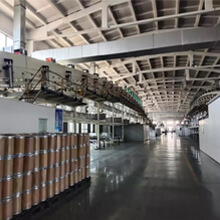
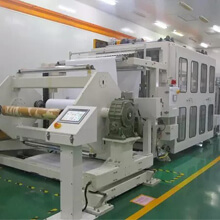
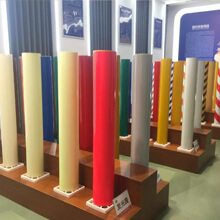
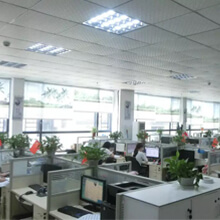
Our Strength
Our Team
The factory focuses on reflective material processing. We have a modern factory with an average technical team experience of more than 20 years.
Our Equipment
We have modern and fully automatic large-scale production equipment, with good production quality and fast delivery.
Features
A wide range of products are cheap, cost-effective, and can be printed and pasted conveniently.
Strong Productivity
Strong production capacity, fast delivery, generally 40 feet high container international shipment, delivery time 15 working days.
Contact us to get a free sample of Reflective Sheeting For Traffic Signs, Today!
Commonly Asked Questions
How can guide signs and international signs help you when driving?
Guide signs point out routes, intersections, services, and points of interest. International signs use symbols rather than words.
What are the 8 colors used for road signs?
What are the meanings of the eight colors used for traffic signs: Red, Yellow, White, Orange, Black, Green, Blue, Brown?
- Red → Stop, Yield, or Prohibited.
- Yellow → Warning.
- White → Regulatory.
- Orange → Construction or Detour.
- Black → Regulatory.
- Green → Guide.
- Blue → Motorist Services.
- Brown → Public Recreation.
What are the meanings of the eight shapes of signs?
What are the meanings of the eight shapes of signs: octagon, triangle, vertical rectangle, pentagon, round, pennant, diamond, horizontal rectangle?
- Octagon → Stop.
- Triangle → Yield.
- Vertical Rectangle → Regulatory.
- Pentagon → School.
- Round → Railroad Crossing.
- Pennant → No Passing.
- Diamond → Warning.
- Horizontal Rectangle → Guide.
What Actions Should You Take at a Sign?
What actions should you take at STOP, YIELD, and speed limit signs?
- At a STOP sign, come to a complete stop and yield the right of way to pedestrians and vehicles.
- At a YIELD sign, slow or stop and give the right of way to cross traffic.
- Speed limit signs indicate the safe maximum or minimum speed.
What are 5 situations where warning signs might be used?
Warning signs might be used to indicate any number of hazards; no passing zones, railroad crossings, school zones, sharp curves, intersections ahead, or animal crossings.
What are reflective signs?
The Science of Reflective Traffic Signs
The science of reflective traffic signs is based on materials that allow signs to reflect back the light from drivers’ headlights in order to improve readability. This technology has been around since the 1930s and has saved many lives, as it creates better visibility at night. Here’s a deeper look at the science and evolution of reflective traffic signs.
Evolution of Reflective Signs
The history of reflective traffic signs began with inventor Harry Heltzer, who worked for 3M, which manufactures various types of adhesive materials for multiple industrial and commercial applications. He served as the corporation’s Chairman and CEO from 1970 to 1975, after serving as VP since 1961. The reflective sign became one of 3M’s most profitable products, according to the New York Times at the time of Heltzer’s death in 2005.
Heltzer helped develop Scotch-Lite, which is the glass bead coating used on road signs and highway paints to project illumination. He is considered the “father of reflective materials.” During his tenure at 3M, earnings rose sharply as the company expanded to serve over 150 countries.
In 1937 as a 3M laborer, Heltzer was assigned to make the center striping on Minneapolis highways more reflective at night. At the time white or yellow paint was the standard and did not provide enough reflectivity.
After a highway official suggested that he embed glass beads into the stripe, his mission was to create glass beads small enough to fit within striping. He used double-coated tape with beads on one side, although at first, he couldn’t figure out how to make it stick to Minnesota streets in the winter. Later he developed a glass-bead reflective compound that proved effective for highway striping. Heltzer ultimately earned six patents for reflective highway inventions.
Modern Improvements
Early retroreflective material was degraded by dirt. However, this issue was resolved with an economical enclosed lens system that has come to be known as engineering grade sheeting.
In the late 1960s, the invention of encapsulated lens sheeting added a resin base and additional reflective coating. This development marked a much brighter and longer-lasting effect than engineering grade sheeting. It’s now the most widespread type of reflective material used for signage. In 1989 an even brighter and more durable but more expensive solution emerged that replaced glass beads with thousands of microscopic prismatic reflectors per square millimeter.
The reason aluminum is a popular choice for traffic signs is that it doesn’t rust and can last many years. Steel coated with zinc is a more economical solution and has the same durable qualities. An even more affordable solution is a plywood blank covered with a layer of plastic, but this material does not last as long as metals.
Retroreflectivity vs Mirrors
Although it seems quite similar, retroreflectivity does not have the same effect as mirrors. With glass beads on or under the transparent film, retroreflection allows a surface to return part of its light to the original source. While the sun scatters light in all directions allowing it to bounce off objects, mirrors cause light to bounce and reflect off surfaces at angles opposite of the sources. What makes retroreflective material different is that it allows light to bend and return directly toward the light source.
Retroreflective sheets are typically cut by hand, although a band saw is often used to cut multiple sheets. The sheets have adhesive backing making them easy to apply to a clean, dry surface.
Conclusion
Consider making your signs more illuminated at night with retroreflective sheeting. For more information about reflective traffic signs, contact KWVINYL to know more details. Our email: info@kwvinyl.com;
What is The History Of Traffic Sign?
Traffic signs or road signs are signs erected at the side of or above roads to give instructions or provide information to road users. The earliest signs were simple wooden or stone milestones. Later, signs with directional arms were introduced, for example, the fingerposts in the United Kingdom and their wooden counterparts in Saxony.
Traffic Sign in London
With traffic volumes increasing since the 1930s, many countries have adopted pictorial signs or otherwise simplified and standardized their signs to overcome language barriers, and enhance traffic safety. Such pictorial signs use symbols (often silhouettes) in place of words and are usually based on international protocols. Such signs were first developed in Europe, and have been adopted by most countries to varying degrees.
History
The earliest road signs were milestones, giving distance or direction; for example, the Romans erected stone columns throughout their empire giving the distance to Rome. According to Strabo, Mauryas erected signboards at a distance of 10 states to mark their roads. In the Middle Ages, multidirectional signs at intersections became common, giving directions to cities and towns.
In 1686, the first known Traffic Regulation Act in Europe is established by King Peter II of Portugal. This act foresees the placement of priority signs in the narrowest streets of Lisbon, stating which traffic should back up to give way. One of these signs still exists at Salvador street, in the neighborhood of Alfama.
The first modern road signs erected on a wide scale were designed for riders of high or “ordinary” bicycles in the late 1870s and early 1880s. These machines were fast, silent and their nature made them difficult to control, moreover their riders traveled considerable distances and often preferred to tour on unfamiliar roads. For such riders, cycling organizations began to erect signs that warned of potential hazards ahead (particularly steep hills), rather than merely giving distance or directions to places, thereby contributing the sign type that defines “modern” traffic signs.
The development of automobiles encouraged more complex signage systems using more than just text-based notices. One of the first modern-day road sign systems was devised by the Italian Touring Club in 1895. By 1900, a Congress of the International League of Touring Organizations in Paris was considering proposals for standardization of road signage. In 1903 the British government introduced four “national” signs based on shape, but the basic patterns of most traffic signs were set at the 1908 International Road Congress in Paris.[citation needed] In 1909, nine European governments agreed on the use of four pictorial symbols, indicating “bump”, “curve”, “intersection”, and “grade-level railroad crossing”. The intensive work on international road signs that took place between 1926 and 1949 eventually led to the development of the European road sign system. Both Britain and the United States developed their own road signage systems, both of which were adopted or modified by many other nations in their respective spheres of influence. The UK adopted a version of the European road signs in 1964 and, over past decades, North American signage began using some symbols and graphics mixed in with English.
In the U.S., the first road signs were erected by the American Automobile Association (AAA). Starting in 1906, regional AAA clubs began paying for and installing wooden signs to help motorists find their way. In 1914, AAA started a cohesive transcontinental signage project, installing more than 4,000 signs in one stretch between Los Angeles and Kansas City alone.
Over the years, change was gradual. Pre-industrial signs were stone or wood, but with the development of Darby’s method of smelting iron using coke, painted cast iron became favored in the late 18th and 19th centuries. Cast iron continued to be used until the mid-20th century, but it was gradually displaced by aluminum or other materials and processes, such as vitreous enameled and/or pressed malleable iron, or (later) steel. Since 1945 most signs have been made from sheet aluminum with adhesive plastic coatings; these are normally retroreflective for nighttime and low-light visibility. Before the development of reflective plastics, reflectivity was provided by glass reflectors set into the lettering and symbols.
New generations of traffic signs based on electronic displays can also change their text (or, in some countries, symbols) to provide for “intelligent control” linked to automated traffic sensors or remote manual input. In over 20 countries, real-time Traffic Message Channel incident warnings are conveyed directly to vehicle navigation systems using inaudible signals carried via FM radio, 3G cellular data, and satellite broadcasts. Finally, cars can pay tolls and trucks pass safety screening checks using video numberplate scanning, or RFID transponders in windshields linked to antennae over the road, in support of onboard signaling, toll collection, and travel time monitoring.
Yet another “medium” for transferring information ordinarily associated with visible signs is RIAS (Remote Infrared Audible Signage), e.g., “talking signs” for print-handicapped (including blind/low-vision/illiterate) people. These are infra-red transmitters serving the same purpose as the usual graphic signs when received by an appropriate device such as a hand-held receiver or one built into a cell phone.


